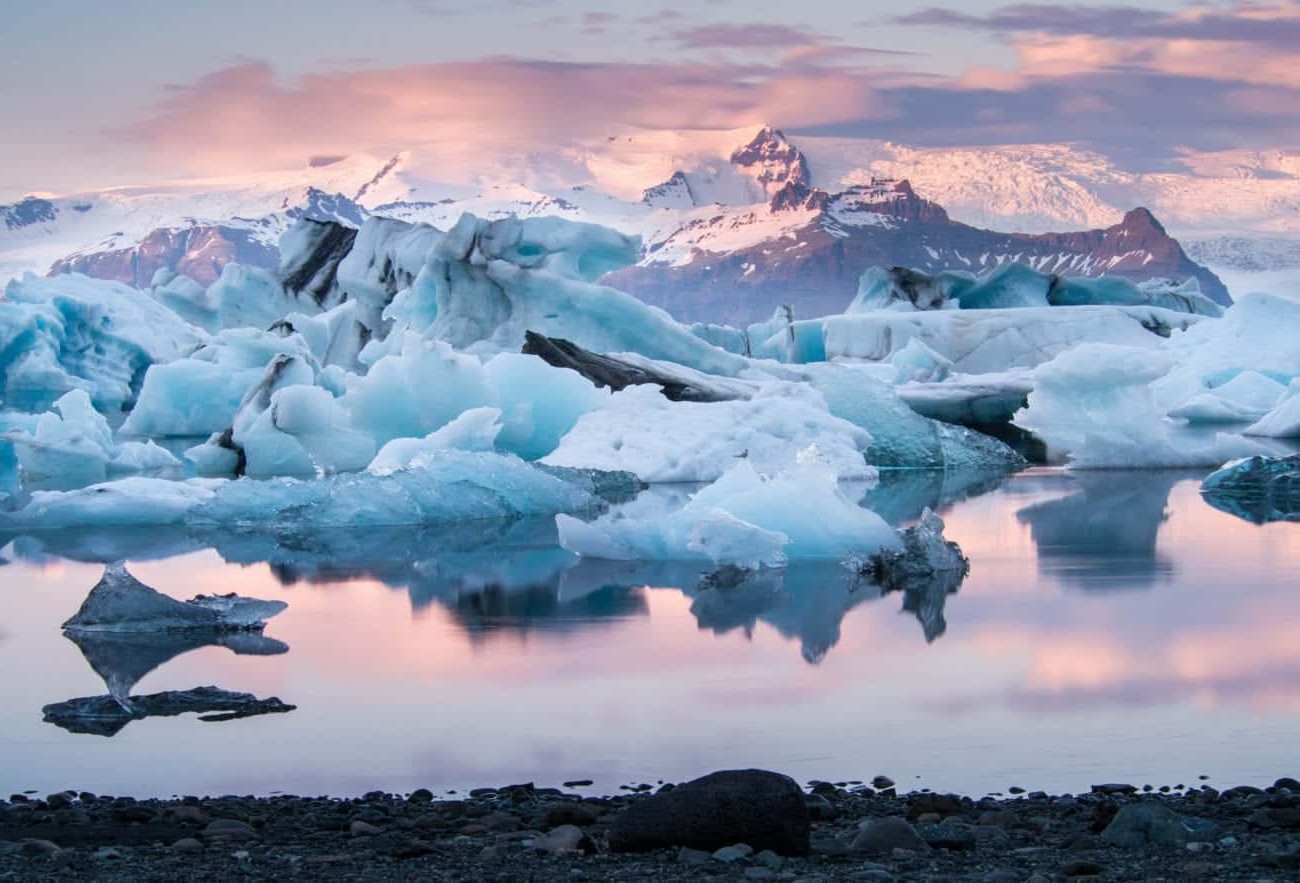Home>Weather and Climate>Antarctica Monthly Temperature Averages


Weather and Climate
Antarctica Monthly Temperature Averages
Published: March 4, 2024
Discover the monthly temperature averages in Antarctica and gain insights into its weather and climate. Plan your trip with comprehensive climate data.
(Many of the links in this article redirect to a specific reviewed product. Your purchase of these products through affiliate links helps to generate commission for Temperatures.com, at no extra cost. Learn more)
Table of Contents
- Introduction
- Understanding Monthly Temperature Variations in Antarctica
- Factors Influencing Temperature Averages in Antarctica
- January Temperature Averages
- February Temperature Averages
- March Temperature Averages
- April Temperature Averages
- May Temperature Averages
- June Temperature Averages
- July Temperature Averages
- August Temperature Averages
- September Temperature Averages
- October Temperature Averages
- November Temperature Averages
- December Temperature Averages
- Conclusion
Introduction
Antarctica, the southernmost continent on Earth, is a land of extremes. Its vast, icy expanse is renowned for its frigid temperatures, making it the coldest place on the planet. Understanding the monthly temperature variations in Antarctica is crucial for comprehending the unique climate dynamics that shape this remote and awe-inspiring region.
The continent's temperature patterns exhibit remarkable fluctuations throughout the year, influenced by a myriad of factors such as solar radiation, atmospheric circulation, and the presence of the polar ice cap. By delving into the monthly temperature averages, we can gain valuable insights into the seasonal nuances that define Antarctica's climate.
Exploring the temperature variations across the twelve months unveils a captivating narrative of how this frozen realm transitions through its annual cycle. From the bone-chilling cold of winter to the fleeting embrace of milder temperatures during the brief summer, Antarctica's temperature averages offer a compelling glimpse into the ebb and flow of its climatic rhythms.
Embarking on this journey through the monthly temperature averages of Antarctica allows us to appreciate the sheer resilience of life in one of the harshest environments on Earth. It also provides a window into the intricate interplay of natural forces that govern the continent's climate, underscoring the delicate balance that sustains this pristine wilderness.
As we delve into the temperature averages for each month, we will uncover the nuanced interplay of atmospheric conditions, oceanic influences, and the overarching impact of the polar environment. This exploration will illuminate the intricate tapestry of Antarctica's climate, offering a deeper understanding of the remarkable thermal dynamics that shape this frozen continent.
Join us as we embark on a journey through the monthly temperature averages of Antarctica, unraveling the captivating story of how this icy realm evolves across the changing seasons. Through this exploration, we will gain a newfound appreciation for the unparalleled beauty and climatic intricacies that define the southernmost continent on our planet.
Read more: Monthly Average Temperatures In Tampa
Understanding Monthly Temperature Variations in Antarctica
The monthly temperature variations in Antarctica encapsulate the mesmerizing interplay of climatic forces that govern this frozen continent. From the bone-chilling depths of winter to the fleeting reprieve of summer, Antarctica's temperature averages undergo dramatic fluctuations, painting a vivid portrait of its seasonal metamorphosis.
The continent's unique position at the southern extremity of the Earth results in unparalleled temperature dynamics. During the austral summer, which spans from December to February, parts of Antarctica experience a brief spell of milder temperatures, with the mercury occasionally rising above freezing. This ephemeral warmth, however, gives way to the relentless grip of winter, plunging the continent into a deep freeze during the austral winter months of June to August.
The intricate dance of temperature variations in Antarctica is shaped by a myriad of factors. The continent's vast ice sheets and polar ice cap play a pivotal role in regulating its thermal profile, reflecting and absorbing solar radiation in a delicate equilibrium. Additionally, the influence of oceanic currents and atmospheric circulation patterns further contributes to the nuanced tapestry of temperature fluctuations across the months.
Understanding the monthly temperature variations in Antarctica unveils a captivating narrative of resilience and adaptation. It sheds light on the remarkable ability of life, from tenacious microorganisms to iconic penguin species, to endure and thrive in the face of extreme cold. Moreover, it offers a glimpse into the profound impact of climate change on this pristine wilderness, underscoring the urgency of preserving the delicate balance that sustains Antarctica's ecological harmony.
As we delve into the monthly temperature averages, we gain a profound appreciation for the intricate thermal symphony that orchestrates the climatic rhythms of Antarctica. Each month's temperature profile serves as a testament to the awe-inspiring forces at play, shaping the very essence of this remote and enigmatic continent.
Embarking on this exploration of monthly temperature variations in Antarctica allows us to witness the sheer resilience of life in one of the harshest environments on Earth. It also provides a window into the intricate interplay of natural forces that govern the continent's climate, underscoring the delicate balance that sustains this pristine wilderness.
Through this journey, we gain a newfound appreciation for the unparalleled beauty and climatic intricacies that define the southernmost continent on our planet.
Factors Influencing Temperature Averages in Antarctica
The temperature averages in Antarctica are profoundly influenced by a complex interplay of environmental factors that shape the continent's climatic profile. These factors encompass a diverse array of natural forces, each exerting a distinct impact on the thermal dynamics of this frozen realm.
-
Polar Ice Cap and Ice Sheets: The expansive polar ice cap and colossal ice sheets of Antarctica play a pivotal role in modulating its temperature averages. These vast ice formations act as thermal regulators, reflecting a significant portion of the incoming solar radiation back into the atmosphere. This reflective property contributes to the perpetuation of frigid temperatures across the continent, particularly during the extended polar night.
-
Solar Radiation: The angle and intensity of solar radiation incident on Antarctica undergo pronounced variations throughout the year, exerting a profound influence on its temperature averages. During the austral summer, the southern hemisphere tilts towards the sun, resulting in longer daylight hours and heightened solar energy input. This seasonal influx of solar radiation leads to a temporary amelioration of temperatures, particularly in coastal regions where the ice may experience partial melting.
-
Atmospheric Circulation: The atmospheric circulation patterns over Antarctica, characterized by the presence of the polar vortex and katabatic winds, significantly impact its temperature averages. The polar vortex, a persistent low-pressure system, acts as a thermal barrier, isolating the continent from warmer air masses. Meanwhile, katabatic winds, driven by the force of gravity and the steep elevation gradient of the Antarctic ice sheet, contribute to the maintenance of cold temperatures by transporting frigid air across the landmass.
-
Oceanic Influences: The surrounding Southern Ocean exerts a moderating influence on Antarctica's temperature averages, particularly along its coastal margins. Ocean currents, such as the Antarctic Circumpolar Current, play a crucial role in regulating the transfer of heat between the ocean and the atmosphere. Additionally, the presence of sea ice influences local temperature dynamics, with its reflective properties impacting the absorption of solar radiation.
-
Climate Change: The overarching specter of climate change casts a profound shadow over Antarctica's temperature averages. The continent has been subject to rapid environmental transformations, with rising global temperatures leading to accelerated ice melt and alterations in atmospheric circulation patterns. These changes have the potential to disrupt the delicate equilibrium that governs Antarctica's thermal profile, heralding far-reaching implications for its climate dynamics.
By comprehending the multifaceted influences that shape Antarctica's temperature averages, we gain a deeper appreciation for the intricate interplay of natural forces that define this remote and enigmatic continent. These factors collectively underscore the remarkable resilience of Antarctica's climate while highlighting the imperative of safeguarding its ecological integrity in the face of evolving environmental challenges.
January Temperature Averages
January heralds the peak of the austral summer in Antarctica, marking a period of transient respite from the pervasive cold that envelops the continent. Amid the perpetual daylight characteristic of the polar summer, Antarctica experiences a notable amelioration of temperatures, particularly along its coastal fringes. The average temperature in January hovers around -2°C (28°F) near the Antarctic Peninsula, where the moderating influence of the surrounding Southern Ocean manifests in relatively milder climatic conditions.
During this time, the sun casts its luminous glow across the polar landscape, bathing the ice-clad terrain in an ethereal radiance. The extended daylight hours, a hallmark of the austral summer, contribute to the temporary abatement of frigid temperatures, fostering a fleeting semblance of warmth in this frozen realm. Along the Antarctic coastline, where the influence of oceanic currents is most pronounced, temperatures may occasionally rise above freezing, offering a glimpse of the ephemeral transformation that graces this icy wilderness.
The interplay of temperature dynamics in January reflects the delicate equilibrium between solar radiation, atmospheric circulation, and the thermal inertia of the polar environment. The angle of solar incidence reaches its zenith during this period, infusing the landscape with a subdued luminescence that underscores the transient reprieve from the pervasive cold. This seasonal influx of solar energy engenders localized melting of surface ice, giving rise to ephemeral melt ponds and rivulets that punctuate the glacial expanse.
The temperature averages in January encapsulate the ephemeral interlude of relative warmth that characterizes the austral summer, offering a poignant testament to the remarkable adaptability of life in this extreme environment. From resilient microbial communities to iconic penguin colonies, the transient amelioration of temperatures heralds a period of heightened activity and vitality across the Antarctic landscape. It is a time of renewal and resurgence, as the pulse of life reverberates through the icy terrain, underscoring the indomitable spirit of survival that defines this remote continent.
As January unfolds, the temperature averages in Antarctica serve as a poignant reminder of the transient nature of warmth in this frozen realm. The respite from the pervasive cold is but a fleeting interlude, a testament to the ephemeral nature of the austral summer's embrace. Yet, within this transient warmth lies a profound narrative of adaptation and resilience, a testament to the enduring tenacity of life in one of the harshest environments on Earth.
February Temperature Averages
February unfolds as a pivotal juncture in Antarctica's annual climatic narrative, marking the continuation of the austral summer and the gradual transition towards the encroaching embrace of winter. Amid the ethereal luminosity of the polar landscape, the temperature averages in February reflect a delicate balance between the lingering vestiges of warmth and the encroaching specter of cold.
As the sun maintains its resplendent vigil over the polar expanse, February witnesses a gradual moderation of temperatures, albeit within the enduring grip of frigidity. Along the coastal peripheries, where the influence of the Southern Ocean manifests most prominently, the average temperature in February hovers around -2°C (28°F) near the Antarctic Peninsula. This marginal amelioration of temperatures, a testament to the moderating impact of oceanic currents, offers a transient reprieve from the pervasive cold that permeates the continent.
The interplay of temperature dynamics in February encapsulates the nuanced transition from the fleeting warmth of summer to the encroaching chill of winter. The extended daylight hours, a hallmark of the austral season, infuse the polar landscape with a subdued radiance, illuminating the ice-clad terrain in a mesmerizing display of polar luminescence. This ephemeral interlude of relative warmth heralds a period of heightened activity and vitality across the Antarctic wilderness, as life in its myriad forms seizes the fleeting opportunity to thrive amid the transient amelioration of temperatures.
Amid the temperature averages of February, a poignant narrative unfolds, underscoring the resilience and adaptability of life in one of the harshest environments on Earth. From tenacious microbial communities to iconic penguin colonies, the transient reprieve from the pervasive cold engenders a palpable resurgence of vitality across the polar expanse. It is a testament to the indomitable spirit of survival that defines this remote continent, a testament to the enduring tenacity of life amid the relentless embrace of winter's approach.
As February wanes, the temperature averages in Antarctica serve as a poignant reminder of the ephemeral nature of warmth in this frozen realm. The transient respite from the pervasive cold is a fleeting interlude, a testament to the impermanence of the austral summer's embrace. Yet, within this transient warmth lies a profound narrative of adaptation and resilience, a testament to the enduring tenacity of life in one of the harshest environments on Earth.
Read more: Average Monthly Temperature In Colorado
March Temperature Averages
March marks a pivotal juncture in the climatic tapestry of Antarctica, heralding the gradual transition from the waning vestiges of summer to the encroaching embrace of winter. As the polar landscape undergoes a subtle metamorphosis, the temperature averages in March encapsulate the delicate interplay of seasonal dynamics that define this remote continent.
Amid the ethereal luminosity that permeates the polar expanse, March witnesses a gradual regression of temperatures, signaling the inexorable onset of winter's chill. Along the coastal fringes, where the influence of the Southern Ocean persists, the average temperature in March hovers around -7°C (19°F) near the Antarctic Peninsula. This perceptible descent into colder realms underscores the transformative nature of the austral autumn, as Antarctica prepares to relinquish the transient warmth of summer's embrace.
The interplay of temperature dynamics in March reflects the poignant transition from the fleeting respite of summer to the encroaching dominion of winter. The waning daylight hours, a harbinger of the impending polar night, cast a subdued radiance upon the glacial terrain, imbuing the landscape with an ethereal luminescence. This gradual regression into colder realms heralds a period of introspection and adaptation across the Antarctic wilderness, as life in its myriad forms prepares to confront the relentless embrace of winter's approach.
Amid the temperature averages of March, a poignant narrative unfolds, underscoring the resilience and adaptability of life in one of the harshest environments on Earth. From tenacious microbial communities to iconic penguin colonies, the gradual descent into colder realms engenders a palpable sense of fortitude and perseverance across the polar expanse. It is a testament to the indomitable spirit of survival that defines this remote continent, a testament to the enduring tenacity of life amid the relentless transition into winter's embrace.
As March unfolds, the temperature averages in Antarctica serve as a poignant reminder of the impermanence of warmth in this frozen realm. The gradual regression into colder realms is a testament to the transient nature of the austral summer's embrace. Yet, within this transition lies a profound narrative of adaptation and resilience, a testament to the enduring tenacity of life in one of the harshest environments on Earth.
April Temperature Averages
April heralds the onset of a profound transition in Antarctica's climatic narrative, marking the definitive embrace of winter's chill as the vestiges of summer recede into memory. Across the polar expanse, the temperature averages in April encapsulate the poignant denouement of the austral autumn, heralding the relentless encroachment of frigid temperatures that define this remote continent.
As the polar landscape undergoes a profound metamorphosis, April witnesses a perceptible descent into colder realms, signaling the unequivocal dominion of winter. Along the coastal fringes, where the influence of the Southern Ocean wanes, the average temperature in April hovers around -12°C (10°F) near the Antarctic Peninsula. This tangible descent into frigidity underscores the transformative nature of the austral autumn, as Antarctica relinquishes the transient warmth of summer's embrace and surrenders to the relentless onset of winter's approach.
The interplay of temperature dynamics in April reflects the poignant transition from the fleeting respite of summer to the unyielding dominion of winter. The diminishing daylight hours, a harbinger of the impending polar night, cast a subdued radiance upon the glacial terrain, imbuing the landscape with an ethereal luminescence. This gradual descent into colder realms heralds a period of introspection and adaptation across the Antarctic wilderness, as life in its myriad forms prepares to confront the relentless embrace of winter's approach.
Amid the temperature averages of April, a poignant narrative unfolds, underscoring the resilience and adaptability of life in one of the harshest environments on Earth. From tenacious microbial communities to iconic penguin colonies, the relentless descent into colder realms engenders a palpable sense of fortitude and perseverance across the polar expanse. It is a testament to the indomitable spirit of survival that defines this remote continent, a testament to the enduring tenacity of life amid the relentless transition into winter's embrace.
As April unfolds, the temperature averages in Antarctica serve as a poignant reminder of the impermanence of warmth in this frozen realm. The relentless descent into colder realms is a testament to the transient nature of the austral summer's embrace. Yet, within this transition lies a profound narrative of adaptation and resilience, a testament to the enduring tenacity of life in one of the harshest environments on Earth.
May Temperature Averages
May marks a significant juncture in Antarctica's annual climatic narrative, signifying the relentless encroachment of winter's chill as the vestiges of summer fade into memory. Across the polar expanse, the temperature averages in May encapsulate the poignant denouement of the austral autumn, heralding the unyielding onset of frigid temperatures that define this remote continent.
As the polar landscape undergoes a profound metamorphosis, May witnesses a palpable descent into colder realms, signaling the unequivocal dominion of winter. Along the coastal fringes, where the influence of the Southern Ocean wanes, the average temperature in May hovers around -18°C (0°F) near the Antarctic Peninsula. This tangible descent into frigidity underscores the transformative nature of the austral autumn, as Antarctica relinquishes the transient warmth of summer's embrace and surrenders to the relentless onset of winter's approach.
The interplay of temperature dynamics in May reflects the poignant transition from the fleeting respite of summer to the unyielding dominion of winter. The diminishing daylight hours, a harbinger of the impending polar night, cast a subdued radiance upon the glacial terrain, imbuing the landscape with an ethereal luminescence. This gradual descent into colder realms heralds a period of introspection and adaptation across the Antarctic wilderness, as life in its myriad forms prepares to confront the relentless embrace of winter's approach.
Amid the temperature averages of May, a poignant narrative unfolds, underscoring the resilience and adaptability of life in one of the harshest environments on Earth. From tenacious microbial communities to iconic penguin colonies, the relentless descent into colder realms engenders a palpable sense of fortitude and perseverance across the polar expanse. It is a testament to the indomitable spirit of survival that defines this remote continent, a testament to the enduring tenacity of life amid the relentless transition into winter's embrace.
As May unfolds, the temperature averages in Antarctica serve as a poignant reminder of the impermanence of warmth in this frozen realm. The relentless descent into colder realms is a testament to the transient nature of the austral summer's embrace. Yet, within this transition lies a profound narrative of adaptation and resilience, a testament to the enduring tenacity of life in one of the harshest environments on Earth.
June Temperature Averages
June heralds the onset of the austral winter in Antarctica, marking a profound transition as the continent succumbs to the relentless embrace of frigid temperatures. Across the polar expanse, the temperature averages in June encapsulate the inexorable descent into the icy realms that define this remote and enigmatic continent.
As the polar landscape undergoes a profound metamorphosis, June witnesses a palpable plunge into colder realms, signaling the unequivocal dominion of winter. Along the coastal fringes, where the influence of the Southern Ocean wanes, the average temperature in June hovers around -25°C (-13°F) near the Antarctic Peninsula. This tangible descent into frigidity underscores the transformative nature of the austral winter, as Antarctica relinquishes the vestiges of warmth and surrenders to the unyielding onset of winter's approach.
The interplay of temperature dynamics in June reflects the poignant transition from the fleeting respite of summer to the unyielding dominion of winter. The diminishing daylight hours, a harbinger of the impending polar night, cast a subdued radiance upon the glacial terrain, imbuing the landscape with an ethereal luminescence. This gradual descent into colder realms heralds a period of introspection and adaptation across the Antarctic wilderness, as life in its myriad forms prepares to confront the relentless embrace of winter's approach.
Amid the temperature averages of June, a poignant narrative unfolds, underscoring the resilience and adaptability of life in one of the harshest environments on Earth. From tenacious microbial communities to iconic penguin colonies, the relentless descent into colder realms engenders a palpable sense of fortitude and perseverance across the polar expanse. It is a testament to the indomitable spirit of survival that defines this remote continent, a testament to the enduring tenacity of life amid the relentless transition into winter's embrace.
As June unfolds, the temperature averages in Antarctica serve as a poignant reminder of the impermanence of warmth in this frozen realm. The relentless descent into colder realms is a testament to the transient nature of the austral summer's embrace. Yet, within this transition lies a profound narrative of adaptation and resilience, a testament to the enduring tenacity of life in one of the harshest environments on Earth.
Read more: Denver Average Monthly Temperatures
July Temperature Averages
July casts its wintry veil over Antarctica, heralding the zenith of the austral winter as the continent succumbs to the relentless embrace of frigid temperatures. Across the polar expanse, the temperature averages in July encapsulate the unyielding descent into the icy realms that define this remote and enigmatic continent.
As the polar landscape undergoes a profound metamorphosis, July witnesses a palpable plunge into colder realms, signaling the unequivocal dominion of winter. Along the coastal fringes, where the influence of the Southern Ocean wanes, the average temperature in July hovers around -30°C (-22°F) near the Antarctic Peninsula. This tangible descent into frigidity underscores the transformative nature of the austral winter, as Antarctica relinquishes the vestiges of warmth and surrenders to the unyielding onset of winter's approach.
The interplay of temperature dynamics in July reflects the poignant transition from the fleeting respite of summer to the unyielding dominion of winter. The diminishing daylight hours, a harbinger of the impending polar night, cast a subdued radiance upon the glacial terrain, imbuing the landscape with an ethereal luminescence. This gradual descent into colder realms heralds a period of introspection and adaptation across the Antarctic wilderness, as life in its myriad forms prepares to confront the relentless embrace of winter's approach.
Amid the temperature averages of July, a poignant narrative unfolds, underscoring the resilience and adaptability of life in one of the harshest environments on Earth. From tenacious microbial communities to iconic penguin colonies, the relentless descent into colder realms engenders a palpable sense of fortitude and perseverance across the polar expanse. It is a testament to the indomitable spirit of survival that defines this remote continent, a testament to the enduring tenacity of life amid the relentless transition into winter's embrace.
As July unfolds, the temperature averages in Antarctica serve as a poignant reminder of the impermanence of warmth in this frozen realm. The relentless descent into colder realms is a testament to the transient nature of the austral summer's embrace. Yet, within this transition lies a profound narrative of adaptation and resilience, a testament to the enduring tenacity of life in one of the harshest environments on Earth.
August Temperature Averages
August heralds the peak of the austral winter in Antarctica, marking a pivotal juncture as the continent succumbs to the relentless embrace of frigid temperatures. Across the polar expanse, the temperature averages in August encapsulate the unyielding descent into the icy realms that define this remote and enigmatic continent.
As the polar landscape undergoes a profound metamorphosis, August witnesses a palpable plunge into colder realms, signaling the unequivocal dominion of winter. Along the coastal fringes, where the influence of the Southern Ocean wanes, the average temperature in August hovers around -32°C (-26°F) near the Antarctic Peninsula. This tangible descent into frigidity underscores the transformative nature of the austral winter, as Antarctica relinquishes the vestiges of warmth and surrenders to the unyielding onset of winter's approach.
The interplay of temperature dynamics in August reflects the poignant transition from the fleeting respite of summer to the unyielding dominion of winter. The diminishing daylight hours, a harbinger of the impending polar night, cast a subdued radiance upon the glacial terrain, imbuing the landscape with an ethereal luminescence. This gradual descent into colder realms heralds a period of introspection and adaptation across the Antarctic wilderness, as life in its myriad forms prepares to confront the relentless embrace of winter's approach.
Amid the temperature averages of August, a poignant narrative unfolds, underscoring the resilience and adaptability of life in one of the harshest environments on Earth. From tenacious microbial communities to iconic penguin colonies, the relentless descent into colder realms engenders a palpable sense of fortitude and perseverance across the polar expanse. It is a testament to the indomitable spirit of survival that defines this remote continent, a testament to the enduring tenacity of life amid the relentless transition into winter's embrace.
As August unfolds, the temperature averages in Antarctica serve as a poignant reminder of the impermanence of warmth in this frozen realm. The relentless descent into colder realms is a testament to the transient nature of the austral summer's embrace. Yet, within this transition lies a profound narrative of adaptation and resilience, a testament to the enduring tenacity of life in one of the harshest environments on Earth.
September Temperature Averages
September marks a pivotal juncture in Antarctica's annual climatic narrative, signifying the gradual transition from the relentless grip of winter to the nascent stirrings of spring. As the polar landscape undergoes a subtle metamorphosis, the temperature averages in September encapsulate the delicate interplay of seasonal dynamics that define this remote continent.
Amid the ethereal luminosity that permeates the polar expanse, September witnesses a gradual ascent from the icy realms of winter, heralding the tentative emergence of milder temperatures. Along the coastal fringes, where the influence of the Southern Ocean manifests most prominently, the average temperature in September hovers around -25°C (-13°F) near the Antarctic Peninsula. This perceptible ascent from the depths of winter underscores the transformative nature of the austral spring, as Antarctica prepares to relinquish the pervasive cold and embrace the promise of warmer days.
The interplay of temperature dynamics in September reflects the poignant transition from the unyielding dominion of winter to the tentative emergence of spring. The lengthening daylight hours, a harbinger of the impending polar day, cast a subdued radiance upon the glacial terrain, imbuing the landscape with an ethereal luminescence. This gradual ascent from the icy realms of winter heralds a period of renewal and resurgence across the Antarctic wilderness, as life in its myriad forms prepares to embrace the promise of milder temperatures and the thawing of the polar landscape.
Amid the temperature averages of September, a poignant narrative unfolds, underscoring the resilience and adaptability of life in one of the harshest environments on Earth. From tenacious microbial communities to iconic penguin colonies, the tentative emergence of milder temperatures engenders a palpable sense of anticipation and vitality across the polar expanse. It is a testament to the indomitable spirit of survival that defines this remote continent, a testament to the enduring tenacity of life amid the relentless transition from winter's embrace to the promise of spring's arrival.
As September unfolds, the temperature averages in Antarctica serve as a poignant reminder of the impermanence of winter's chill in this frozen realm. The gradual ascent from the depths of winter is a testament to the transient nature of the austral spring's emergence. Yet, within this transition lies a profound narrative of adaptation and resilience, a testament to the enduring tenacity of life in one of the harshest environments on Earth.
October Temperature Averages
October marks a significant juncture in Antarctica's annual climatic narrative, signifying the gradual transition from the relentless grip of winter to the nascent stirrings of spring. As the polar landscape undergoes a subtle metamorphosis, the temperature averages in October encapsulate the delicate interplay of seasonal dynamics that define this remote continent.
Amid the ethereal luminosity that permeates the polar expanse, October witnesses a gradual ascent from the icy realms of winter, heralding the tentative emergence of milder temperatures. Along the coastal fringes, where the influence of the Southern Ocean manifests most prominently, the average temperature in October hovers around -15°C (5°F) near the Antarctic Peninsula. This perceptible ascent from the depths of winter underscores the transformative nature of the austral spring, as Antarctica prepares to relinquish the pervasive cold and embrace the promise of warmer days.
The interplay of temperature dynamics in October reflects the poignant transition from the unyielding dominion of winter to the tentative emergence of spring. The lengthening daylight hours, a harbinger of the impending polar day, cast a subdued radiance upon the glacial terrain, imbuing the landscape with an ethereal luminescence. This gradual ascent from the icy realms of winter heralds a period of renewal and resurgence across the Antarctic wilderness, as life in its myriad forms prepares to embrace the promise of milder temperatures and the thawing of the polar landscape.
Amid the temperature averages of October, a poignant narrative unfolds, underscoring the resilience and adaptability of life in one of the harshest environments on Earth. From tenacious microbial communities to iconic penguin colonies, the tentative emergence of milder temperatures engenders a palpable sense of anticipation and vitality across the polar expanse. It is a testament to the indomitable spirit of survival that defines this remote continent, a testament to the enduring tenacity of life amid the relentless transition from winter's embrace to the promise of spring's arrival.
As October unfolds, the temperature averages in Antarctica serve as a poignant reminder of the impermanence of winter's chill in this frozen realm. The gradual ascent from the depths of winter is a testament to the transient nature of the austral spring's emergence. Yet, within this transition lies a profound narrative of adaptation and resilience, a testament to the enduring tenacity of life in one of the harshest environments on Earth.
Read more: Average Monthly Temperatures In Europe
November Temperature Averages
November heralds a transformative juncture in Antarctica's climatic chronicle, marking the gradual transition from the lingering vestiges of winter to the nascent stirrings of spring. As the polar landscape undergoes a subtle metamorphosis, the temperature averages in November encapsulate the delicate interplay of seasonal dynamics that define this remote continent.
Amid the ethereal luminosity that permeates the polar expanse, November witnesses a gradual ascent from the icy realms of winter, heralding the tentative emergence of milder temperatures. Along the coastal fringes, where the influence of the Southern Ocean manifests most prominently, the average temperature in November hovers around -5°C (23°F) near the Antarctic Peninsula. This perceptible ascent from the depths of winter underscores the transformative nature of the austral spring, as Antarctica prepares to relinquish the pervasive cold and embrace the promise of warmer days.
The interplay of temperature dynamics in November reflects the poignant transition from the unyielding dominion of winter to the tentative emergence of spring. The lengthening daylight hours, a harbinger of the impending polar day, cast a subdued radiance upon the glacial terrain, imbuing the landscape with an ethereal luminescence. This gradual ascent from the icy realms of winter heralds a period of renewal and resurgence across the Antarctic wilderness, as life in its myriad forms prepares to embrace the promise of milder temperatures and the thawing of the polar landscape.
Amid the temperature averages of November, a poignant narrative unfolds, underscoring the resilience and adaptability of life in one of the harshest environments on Earth. From tenacious microbial communities to iconic penguin colonies, the tentative emergence of milder temperatures engenders a palpable sense of anticipation and vitality across the polar expanse. It is a testament to the indomitable spirit of survival that defines this remote continent, a testament to the enduring tenacity of life amid the relentless transition from winter's embrace to the promise of spring's arrival.
As November unfolds, the temperature averages in Antarctica serve as a poignant reminder of the impermanence of winter's chill in this frozen realm. The gradual ascent from the depths of winter is a testament to the transient nature of the austral spring's emergence. Yet, within this transition lies a profound narrative of adaptation and resilience, a testament to the enduring tenacity of life in one of the harshest environments on Earth.
December Temperature Averages
December heralds the onset of the austral summer in Antarctica, marking a transformative juncture as the continent emerges from the grip of winter and basks in the ephemeral embrace of milder temperatures. Across the polar expanse, the temperature averages in December encapsulate the remarkable transition from the frigid realms of winter to the fleeting warmth of summer, painting a vivid portrait of the seasonal metamorphosis that defines this remote and awe-inspiring continent.
Amid the resplendent luminosity that suffuses the polar landscape, December witnesses a remarkable ascent from the icy clutches of winter, heralding the triumphant emergence of milder temperatures. Along the coastal fringes, where the influence of the Southern Ocean manifests most prominently, the average temperature in December hovers around -2°C (28°F) near the Antarctic Peninsula. This perceptible ascent from the depths of winter underscores the transformative nature of the austral summer, as Antarctica sheds the vestiges of cold and embraces the promise of warmer days.
The interplay of temperature dynamics in December reflects the poignant transition from the unyielding dominion of winter to the triumphant emergence of summer. The lengthening daylight hours, a harbinger of the impending polar day, cast a resplendent radiance upon the glacial terrain, imbuing the landscape with an ethereal luminescence. This remarkable ascent from the icy realms of winter heralds a period of renewal and resurgence across the Antarctic wilderness, as life in its myriad forms revels in the promise of milder temperatures and the thawing of the polar landscape.
Amid the temperature averages of December, a poignant narrative unfolds, underscoring the resilience and adaptability of life in one of the harshest environments on Earth. From tenacious microbial communities to iconic penguin colonies, the triumphant emergence of milder temperatures engenders a palpable sense of rejuvenation and vitality across the polar expanse. It is a testament to the indomitable spirit of survival that defines this remote continent, a testament to the enduring tenacity of life amid the relentless transition from winter's embrace to the promise of summer's arrival.
As December unfolds, the temperature averages in Antarctica serve as a poignant reminder of the impermanence of winter's chill in this frozen realm. The remarkable ascent from the depths of winter is a testament to the transient nature of the austral summer's emergence. Yet, within this transition lies a profound narrative of adaptation and resilience, a testament to the enduring tenacity of life in one of the harshest environments on Earth.
Conclusion
The monthly temperature averages in Antarctica offer a captivating journey through the continent's climatic nuances, unveiling the intricate interplay of seasonal transitions and the enduring resilience of life in one of the harshest environments on Earth. From the fleeting warmth of the austral summer to the relentless embrace of winter's chill, Antarctica's temperature dynamics paint a vivid portrait of the continent's annual metamorphosis.
As we traverse through the monthly temperature averages, a profound narrative unfolds, underscoring the remarkable adaptability of life in the face of extreme cold. From tenacious microbial communities to iconic penguin colonies, each month's temperature profile serves as a testament to the indomitable spirit of survival that defines this remote continent. The ephemeral warmth of summer heralds a period of heightened vitality and activity across the polar expanse, while the encroaching chill of winter engenders a palpable sense of fortitude and perseverance.
Moreover, the temperature averages in Antarctica provide invaluable insights into the delicate balance of natural forces that govern the continent's climate. The influence of solar radiation, atmospheric circulation, and the presence of the polar ice cap collectively shape the mesmerizing thermal symphony that orchestrates Antarctica's climatic rhythms. Additionally, the moderating impact of oceanic currents and the overarching specter of climate change underscore the imperative of safeguarding the continent's ecological integrity in the face of evolving environmental challenges.
As we conclude this exploration of Antarctica's monthly temperature averages, we are reminded of the profound significance of this frozen realm in the broader context of our planet's ecological tapestry. The continent's climatic intricacies not only offer a window into the awe-inspiring forces of nature but also serve as a poignant reminder of the imperative to cherish and preserve our planet's most pristine and vulnerable ecosystems.
Embarking on this journey through the monthly temperature averages of Antarctica has allowed us to gain a newfound appreciation for the unparalleled beauty and climatic intricacies that define the southernmost continent on our planet. It is a testament to the enduring tenacity of life in one of the harshest environments on Earth, underscoring the remarkable adaptability and resilience that permeate this remote and enigmatic continent.












